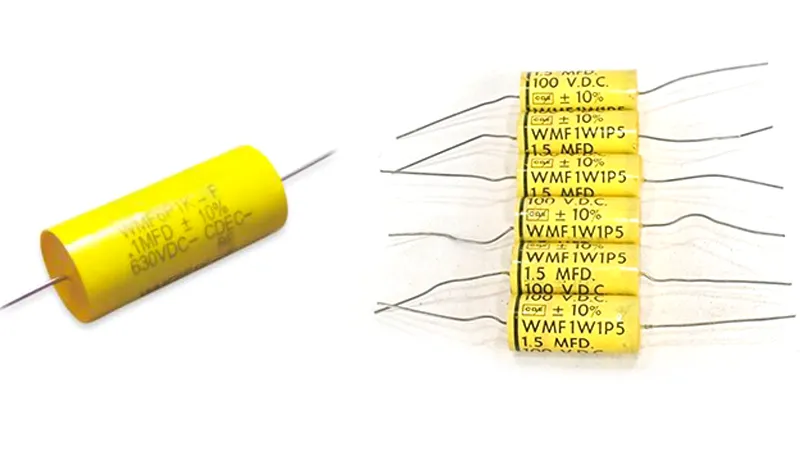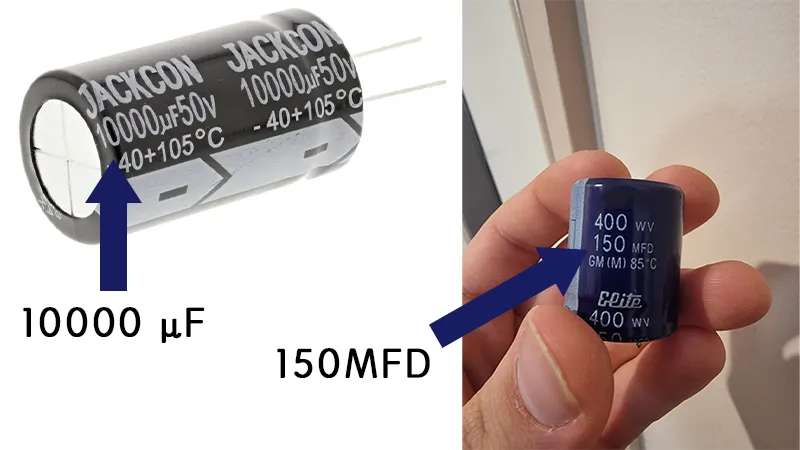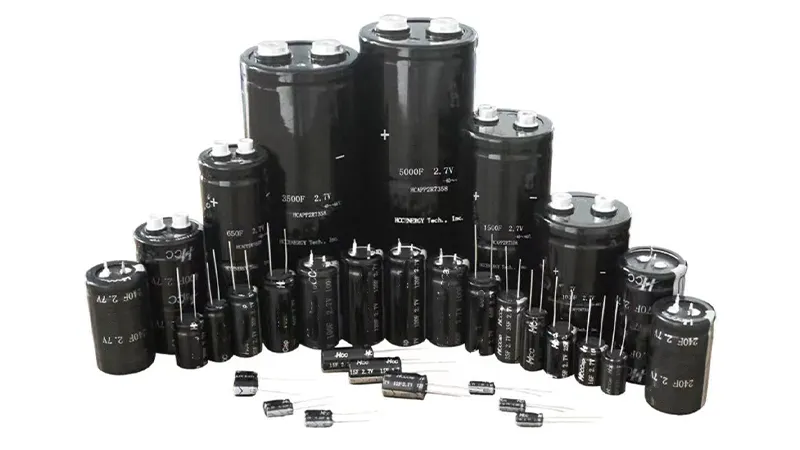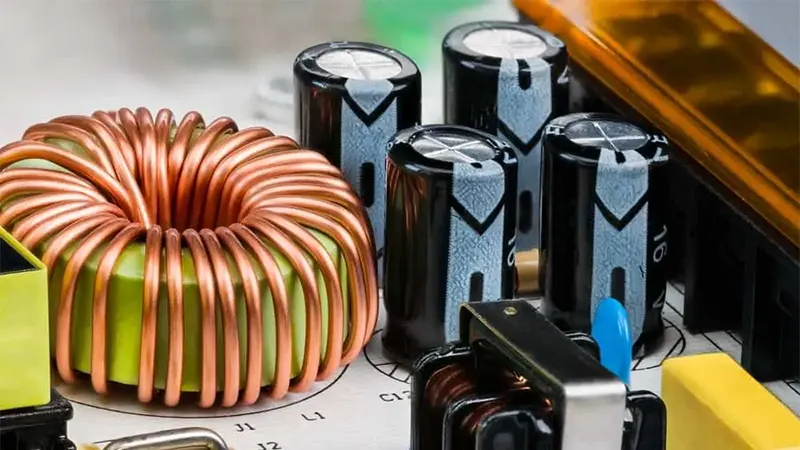An MFD capacitor, or microfarad capacitor, is a component used in electrical circuits to store and release electrical energy. The term “MFD” stands for “microfarads,” which measures the capacitor’s capacitance. Capacitance refers to the capacitor’s ability to store electric charge per unit voltage.
Both “MFD” and “µF” represent the unit of capacitance known as the microfarad, where one microfarad equals (1 \times 10^{-6}) farads. However, “MFD” has largely fallen out of favor due to its potential confusion with “millifarad,” which is rarely used. “MFD” was originally employed for ease of printing but is now considered antiquated. In modern usage, “µF” (or with the correct lettering, “µF”) is the preferred notation for indicating microfarads.
What is the Meaning of MFD in Capacitors?

In practical terms, the MFD rating indicates how much charge a capacitor can store per unit of voltage. Capacitors with higher MFD ratings can store more charge and are commonly used in applications requiring significant energy storage, such as power supply circuits, electric motor starting circuits, audio equipment, and various electronic devices.
What is the Difference Between μf and MFD Capacitors?

“μF” and “MFD” both refer to the same unit of measurement for capacitance: microfarads (μF). In other words, there is no difference between a capacitor labeled as “μF” and one labeled as “MFD” in terms of their capacitance value. They both represent microfarads, which are one-millionth of a farad.
The use of “μF” and “MFD” is simply a matter of notation or labeling preference. Some manufacturers use “μF” to denote microfarads, while others use “MFD.” Both notations are widely understood within the electronics industry to represent the same unit of capacitance.
What Are the Uses of MFD Capacitors?

MFD capacitors, or microfarad capacitors, find application in a wide range of electronic and electrical systems where the storage and release of electrical energy are essential. Here are some common applications:
Power Supply Filtering: MFD capacitors are often used in power supply circuits to filter out noise and stabilize the voltage. They help smooth out fluctuations in the voltage supply, ensuring a steady and clean power output to sensitive electronic components.
Motor Start and Run Capacitors: In electric motors, MFD capacitors are utilized for starting and running purposes. These capacitors provide the initial boost of power required to start the motor and help maintain a consistent speed during operation.
Audio Equipment: MFD capacitors are employed in audio equipment such as amplifiers, speakers, and crossover networks. They are used for coupling, decoupling, and filtering purposes, helping to improve the performance and fidelity of the audio signals.
Lighting Circuits: In lighting circuits, MFD capacitors are used for power factor correction and to control the brightness and intensity of lights. They help regulate the flow of current and improve the efficiency of lighting systems.
Timing Circuits: MFD capacitors are also utilized in timing circuits, oscillators, and frequency generators. They control the timing and frequency of signals, enabling the precise operation of electronic devices and systems.
Electronic Filters: MFD capacitors are integral components of electronic filters, including low-pass, high-pass, band-pass, and notch filters. They help block or pass specific frequencies of signals, allowing for signal conditioning and selective frequency response.
The Capacitance Conversion Table
As previously mentioned, capacitance units are typically expressed in microfarads (μF). However, it is not uncommon to encounter capacitor ratings displayed in units such as nanofarads (nF) and picofarads (pF) by certain manufacturers. For example, a 0.1μF capacitor may be labeled as 100nF.
Similarly, large capacitance values can be represented in picofarads, even though the specifications are originally given in microfarads. This situation may lead to a mismatch between the desired unit (μF) and the available options in either pF or nF.
By utilizing this conversion table, you can easily translate capacitance values between microfarads, nanofarads, and picofarads as needed for your specific application.
| uF (Microfarad) | nF (Nanofarad) | pF (Picofarad) |
| 0.001 | 1.0 | 1000 |
| 0.0015 | 1.5 | 1500 |
| 0.002 | 2.0 | 2000 |
| 0.0025 | 2.5 | 2500 |
| 0.003 | 3.0 | 3000 |
| 0.0035 | 3.5 | 3500 |
| 0.005 | 5.0 | 5000 |
Choosing the Right MFD Capacitor Size

Choosing the correct size of a capacitor depends significantly on its intended application, particularly when considering the use of MFD capacitors for motor operation, such as in refrigeration units and air conditioning systems. The capacitor’s size plays a crucial role in determining whether a motor starts successfully.
Several key factors influence the selection of the capacitor size, with voltage and motor starting requirements being paramount. Adjusting the MFD capacitor rating can enhance the starting torque of a motor, especially if you require more power for starting.
One effective method to achieve this is by replacing the capacitor with one of a higher rating. However, it’s essential to consider several factors to ensure optimal power efficiency. These factors include temperature conditions, rated motor speed, and power limits.
In capacitor applications, there’s typically a margin for error when setting the MFD rating. A tolerance level of ±6% is generally considered suitable for a capacitor-run motor. This tolerance means that a 50 MFD capacitor can vary between 47.6μF and 52.4μF while still functioning effectively. Capacitors rated below this range may not provide optimal functionality.
Conclusion
MFD capacitors are essential in diverse electronic and electrical applications, ensuring efficient operation and reliability.
They are vital components in power supply filtering, motor starting circuits, and audio equipment, among others, due to their versatility and functionality.
Understanding MFD capacitors is crucial for success in electronics and electrical engineering, whether you’re designing circuits, troubleshooting systems, or exploring electronic components.